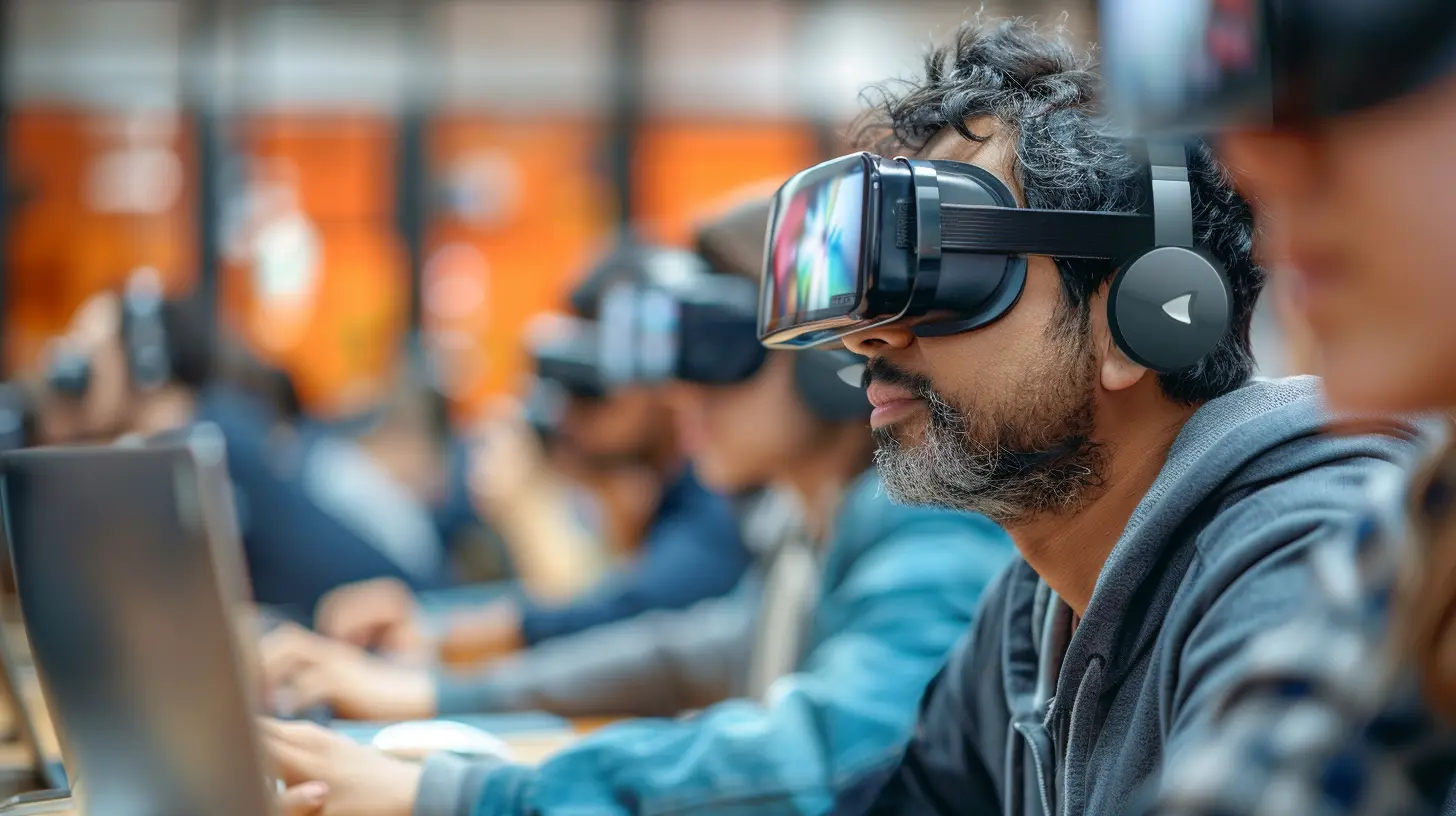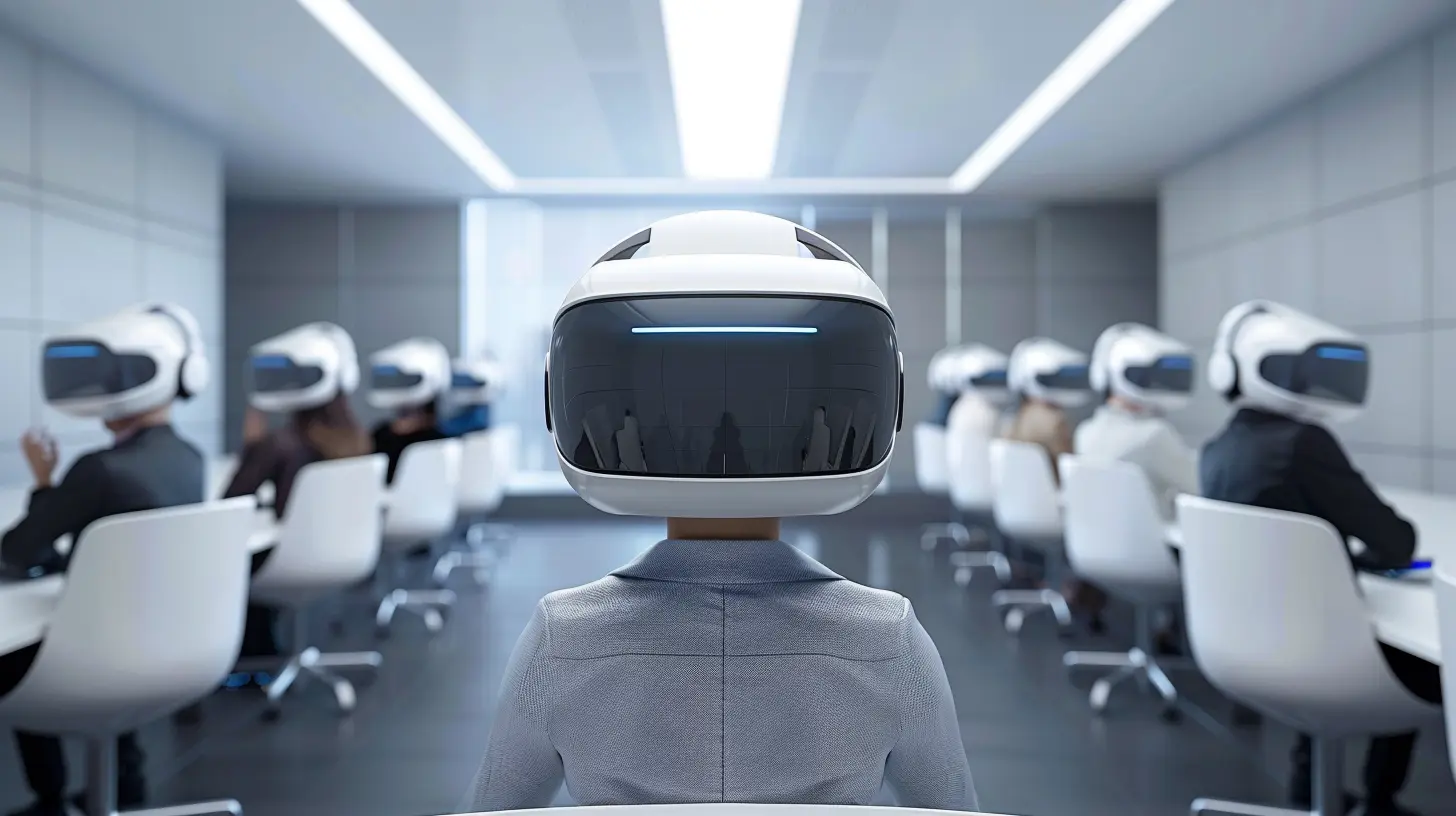Exploring the Future of Blended Learning in Corporate Training
21 July 2025
Corporate training has come a long way from stuffy boardroom seminars and monotonous slide decks. In today’s fast-paced world, companies need to ensure their employees are always learning, growing, and adapting to new challenges. But with the rise of digital transformation, traditional training methods often fall short.
Enter blended learning—a dynamic fusion of face-to-face instruction and online learning that brings the best of both worlds together. But what does the future hold for blended learning in corporate training? Let’s dive in!

What is Blended Learning?
Before we explore its future, let's get a quick refresher. Blended learning is a mix of traditional instructor-led training and digital learning methods. Instead of choosing between in-person workshops and online courses, companies use both to create a flexible and effective learning experience.For example, an employee might go through self-paced online modules and then attend live virtual discussions or in-person workshops to reinforce concepts. This approach combines convenience, engagement, and personalization, making learning more effective and enjoyable.

Why is Blended Learning Gaining Popularity?
The business world is evolving rapidly, and companies need agile, knowledgeable employees to stay competitive. Traditional one-size-fits-all training no longer works. Employees need learning experiences that are:- Flexible: People can learn at their own pace, fitting training around their work schedules.
- Engaging: A mix of videos, quizzes, simulations, and interactions keeps learners interested.
- Effective: In-person reinforcement ensures knowledge sticks.
- Cost-efficient: Companies can save money on travel and venue costs while maintaining quality learning experiences.
Now that we understand why blended learning is a game-changer, let’s explore what the future holds.

The Future of Blended Learning in Corporate Training
1. AI-Powered Personalization
Imagine an online course that adapts to your strengths and weaknesses, offering additional content where you struggle and skipping over concepts you’ve already mastered. That’s what Artificial Intelligence (AI) can do for blended learning.AI-driven learning platforms analyze employee performance and create tailored learning pathways. Employees no longer have to sit through generic courses—they get exactly what they need, when they need it.
2. Immersive Training with AR & VR
Augmented Reality (AR) and Virtual Reality (VR) are no longer just for gamers. These technologies are revolutionizing corporate training by providing immersive, hands-on learning experiences.Picture this: A new employee in a manufacturing company goes through safety training using VR. Instead of just reading about hazards, they experience a simulated factory environment, practicing safety protocols in real-time. This kind of interactive learning sticks far better than reading a manual.
AR, on the other hand, can overlay information onto real-world tasks. For example, field technicians can use AR glasses to receive step-by-step guidance while repairing equipment, making training seamless and efficient.
3. Microlearning for Short Attention Spans
Let’s be honest—no one enjoys sitting through hours of training. That’s why microlearning is on the rise. This approach breaks down training into bite-sized lessons, usually 5-10 minutes long.- Short videos
- Quick interactive quizzes
- Flashcards for key concepts
- Podcasts for on-the-go learning
This makes it easy for employees to consume content on the fly, whether they’re commuting, on a coffee break, or waiting for a meeting to start.
4. Gamification to Boost Engagement
Who doesn’t love a little competition? Gamification taps into our natural desire for achievement and rewards. By incorporating elements like:- Leaderboards
- Badges & certifications
- Points & progress tracking
- Challenges & group competitions
...employees stay motivated and engaged in their learning journey. It transforms training from something employees have to do into something they want to do.
5. Social Learning & Collaboration Tools
People learn best when they learn together. The future of blended learning will emphasize peer-to-peer learning, mentorship, and collaboration.Tools like Slack, Microsoft Teams, and dedicated learning platforms will integrate forums, discussion groups, and peer feedback to make learning more interactive. Real-time problem-solving sessions, group projects, and team discussions will make training more dynamic and engaging.
6. Mobile Learning for On-the-Go Training
Employees don’t always have access to a desktop for training. That’s why mobile learning will continue to grow. Mobile-friendly courses allow employees to learn anytime, anywhere, whether they’re traveling for work, waiting for a meeting, or even during lunch breaks.Features like offline access, push notifications, and AI-driven recommendations will make mobile learning an integral part of corporate training.
7. Data-Driven Learning Insights
Training should be measurable. Companies are now leveraging learning analytics to track engagement, progress, and performance.- Which courses are employees engaging with the most?
- Where do learners struggle the most?
- How does training impact job performance?
These insights help companies refine training programs, making learning more effective and ensuring ROI on training investments.
8. Soft Skills Training with AI Coaches
Technical skills can be taught, but soft skills like leadership, communication, and emotional intelligence require practice. AI-powered virtual coaches will become a big part of corporate training, offering scenario-based training and real-time feedback.For instance, an AI coach can simulate a difficult conversation with a client, helping employees practice their communication and negotiation skills in a risk-free environment.
9. Hybrid Workplaces = Hybrid Learning
With remote and hybrid work becoming the norm, corporate training needs to be just as flexible. Companies will invest in seamless online-offline learning experiences, ensuring employees can access training materials whether they’re in the office or at home.Live webinars, virtual instructor-led training (VILT), and on-demand content will bridge the gap between physical and remote learning. 
How Companies Can Adapt to the Future of Blended Learning
1. Invest in the Right Technology
Choosing a robust Learning Management System (LMS) with AI capabilities, gamification, and mobile accessibility will set companies up for success.2. Focus on Employee Needs
Training should be designed with the employee’s experience in mind. Gather feedback and continuously improve content to keep employees engaged.3. Encourage a Culture of Continuous Learning
Make learning a part of the company’s DNA. Provide incentives, recognize achievements, and create mentorship programs to keep employees motivated.4. Use Data to Improve Training
Leverage analytics to track progress and make data-driven improvements. This ensures that training remains relevant and impactful.Final Thoughts
Blended learning in corporate training isn’t just a trend—it’s the future. As technology continues to evolve, companies that embrace innovative learning methods will have a more engaged, skilled, and adaptable workforce.By incorporating AI, AR/VR, gamification, and mobile learning, organizations can deliver training that is not only effective but also enjoyable. The goal is simple: make learning more accessible, personalized, and engaging for employees.
So, is your company ready to ride the wave of the future? Because blended learning is here to stay!
all images in this post were generated using AI tools
Category:
Blended LearningAuthor:

Bethany Hudson
Discussion
rate this article
1 comments
Milena McIntire
Blended learning is the bridge to a dynamic future in corporate training! By merging traditional methods with innovative technology, we can create engaging learning experiences that empower employees and drive organizational success. Embrace this evolution, as it opens doors to new skills, collaboration, and endless possibilities for growth and development!
August 12, 2025 at 12:51 PM

Bethany Hudson
Thank you for your insightful comment! I completely agree that blended learning is pivotal for fostering engagement and growth in corporate training. Embracing this innovative approach truly unlocks new opportunities for both employees and organizations.


